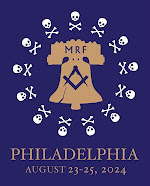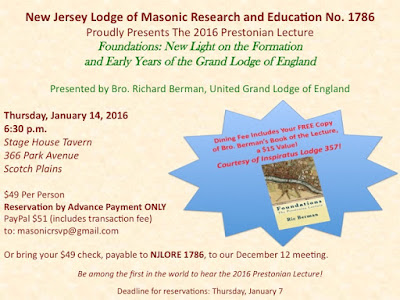As I’ve noted here and there over the years on The Magpie, I very much enjoy finding on other blogs that typically have nothing to do with Freemasonry interesting posts that are entirely about Freemasonry and, on Monday, the Adrian Harrington book dealer blog gratified that itch in a most interesting way.
Mr. Harrington has been in the book trade in London for 45 years; in fact, three generations of his family now operate the business. Click here to see the website, and be sure to visit the Occult & Esoterica listings.
The blog post in question shares a rare document that came to the dealer inadvertently. He explains:
 |
| Letterhead of the Greek lodge. © James Murray 2015 |
Working with rare and valuable books has a tendency to make the extraordinary seem rather ordinary. You start to wonder how certain agglomerations of leather, cloth, paper, and ink can be worth so much. These doubts are cast aside, however, when confronted with something that makes a personal connection with you. The truth is that books, letters, and diaries provide the most direct links between individuals from the past and those living in the present. Although it is the messages they transmit which are invaluable, surely paper and ink are no less valuable as tangible markers of history than art or architecture?
It is with these thoughts in mind that I encounter a fascinating letter, pulled from a mass of moldering legal documents. It is a personal missive, possibly wrapped up in a bundle of paperwork by accident, and now in my hands entirely by chance.
 |
| The letter in question. © James Murray 2015 |
Read all about it, and see more photos, here.
 |
| Sapuncakis Köşkü. © James Murray 2012 |



































































